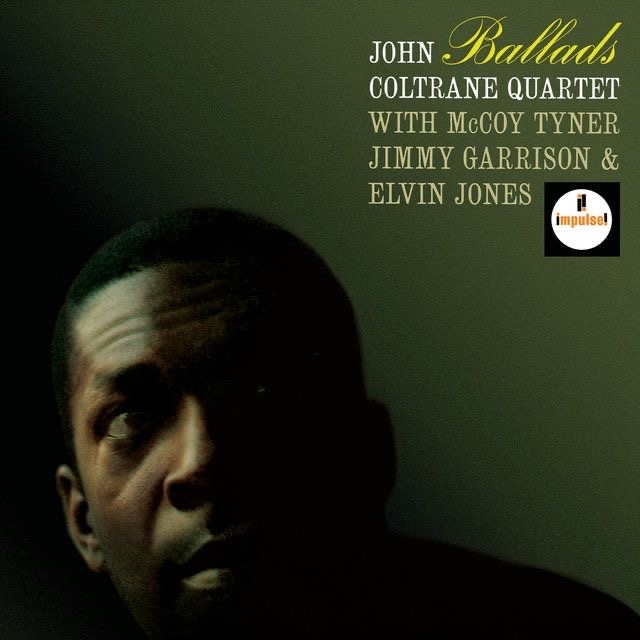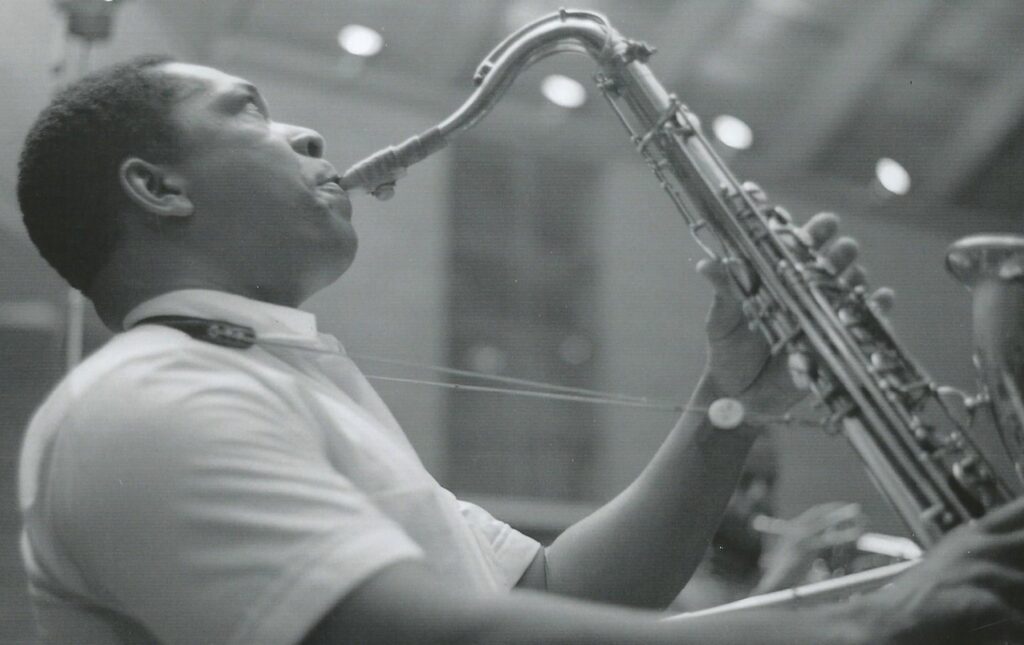Dive into the Power & Passion of ‘Tenor Madness
In the vast panorama of jazz, Sonny Rollins’ “Tenor…
The notes of John Coltrane‘s “Ballads” drift through the air, captivating our emotions. Warm tones fill the room, creating a dreamlike atmosphere that we can’t help but surrender to. I’m left breathless and wanting more. Recorded on December 21, 1961, September 18 and November 13, 1962, these sessions birthed an extraordinary album, released in 1963 by Impulse! Records. Coltrane, McCoy Tyner, Jimmy Garrison, and Elvin Jones made magic in the iconic Rudy Van Gelder’s studio, a creative sanctuary located in Englewood Cliffs, New Jersey.

John Coltrane, the maestro, was exploring the outer limits of his horn’s possibilities, relentlessly pushing boundaries. McCoy Tyner, the piano prodigy, was refining his distinctive harmonic language. Jimmy Garrison, the steadfast bassist, was weaving intricate rhythmic tapestries. Elvin Jones, the ferocious drummer, was driving the quartet with his signature polyrhythmic intensity. Together, these four titans, masters of their craft, convened to explore uncharted territory: the realm of ballads.

“Say It (Over and Over Again)” opens the album, a romantic whisper that ebbs and flows like the tide. Coltrane’s saxophone is a gentle embrace, each note an emotional caress that reaches into our very souls. Tyner’s piano cascades like a waterfall, while Garrison and Jones lay down an understated but essential foundation.
“You Don’t Know What Love Is” follows, the melody unfolding like aching confessions of love. Coltrane’s saxophone weeps gently, accompanied by Tyner’s poignant harmony. Garrison’s bass and Jones’ brushes keep time with the precision of a ticking clock, counting down moments in a lover’s embrace.
The third track, “Too Young to Go Steady,” is a wistful reverie, imbued with an air of innocence. Coltrane’s saxophone sings sweetly, while Tyner provides gentle harmonic support. Garrison and Jones, locked in rhythmic harmony, paint the scene of a youthful love affair.
“All or Nothing at All” bursts forth, a passionate declaration that refuses to settle for less. Coltrane’s saxophone soars, buoyed by Tyner’s lush chords, Garrison’s agile bass, and Jones’ propulsive drumming. The quartet’s synergy is electrifying, each musician contributing to the tapestry of sound.
The album’s crown jewel, in this humble writer’s opinion, is “I Wish I Knew.” Coltrane’s phrasing captures the yearning of the lyrics, his saxophone a voice imbued with the ache of the unknown. Tyner’s piano resonates like the tolling of a bell, echoing the sentiment. Garrison and Jones provide a steady heartbeat, grounding the lament. Every note, every nuance, sings of a universal longing for certainty in a world where little is guaranteed.
“Ballads” explores the soft, tender side of jazz, bringing forth the beauty of simplicity. Coltrane’s approach to these timeless melodies is a study in restraint, in finding the essence of the song and letting it speak through his horn. The album serves as a testament to the quartet’s ability to evoke the deepest emotions with the subtlest of gestures.
When compared to Coltrane’s more avant-garde offerings, “Ballads” stands out as a unique and accessible entry in his discography. It shares a spirit with his collaborations with Johnny Hartman and Duke Ellington, where melody and warmth take center stage.
Impulse! Records, with a reputation for nurturing boundary-pushing artists, played a significant role in the album’s direction. The relationship between the label and Coltrane allowed the artist to explore different facets of his musicianship, resulting in this sublime collection of ballads.
Upon its release, “Ballads” was met with mixed reactions. Some embraced its lyrical beauty, while others criticized it as a departure from Coltrane’s more adventurous works. Over time, however, the album has gained recognition as an essential part of his oeuvre, showcasing a different side of the saxophone giant. Its impact can be heard in the countless musicians who have since drawn inspiration from Coltrane’s approach to ballads.
In the years that followed, “Ballads” has proved influential in shaping the jazz ballad tradition. Coltrane’s introspective and emotive interpretation of these timeless tunes has served as a benchmark for generations of artists seeking to express the depths of the human experience through music.
As I sit here, still basking in the afterglow of the album’s final note, I am struck by the power of simplicity. “Ballads” is a testament to the mastery of John Coltrane and his fellow musicians, who together crafted a timeless work of art that resonates with listeners across the ages. It is a reminder that sometimes, the most profound statements can be made with the gentlest touch.
In conclusion, John Coltrane’s “Ballads” is a treasure, an exploration of love, longing, and the human condition through the lens of some of the most beautiful melodies in the jazz canon. It is an album that transcends time, captivating listeners with its warmth, grace, and the sublime artistry of the musicians who brought it to life. To borrow the words of Duke Ellington, “it don’t mean a thing if it ain’t got that swing,” and “Ballads” has that swing in spades, albeit with a tender, caressing touch that leaves us yearning for more.